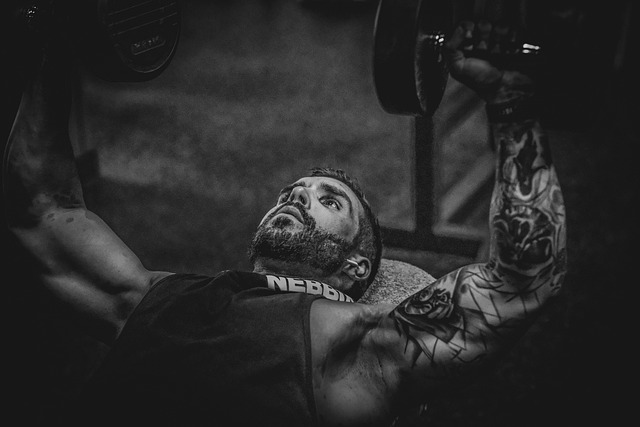In today’s fast-paced world, where health and fitness are more accessible than ever, misinformation about exercise continues to spread like wildfire. From social media influencers to outdated gym folklore, it’s easy to fall prey to myths that can hinder your progress or even lead to injury. Understanding the truth behind these misconceptions is essential for anyone looking to optimize their fitness journey. In this article, we’ll debunk some of the most common exercise myths, providing clarity and actionable advice to help you achieve your goals safely and effectively.
Myth 1: More Is Always Better
One of the most pervasive myths in the fitness world is the belief that spending hours at the gym every day guarantees faster results. While dedication is key, overtraining can actually do more harm than good. Excessive exercise without proper rest can lead to burnout, fatigue, and even injuries such as stress fractures or muscle strains.
The Truth: Quality trumps quantity when it comes to exercise. A well-structured workout plan that includes adequate recovery time allows your muscles to repair and grow stronger. Research shows that incorporating rest days into your routine not only prevents overuse injuries but also enhances performance by giving your body time to adapt. Instead of focusing on how long you spend working out, prioritize intensity, form, and consistency.
Myth 2: Lifting Weights Makes Women Bulky
This myth has discouraged countless women from picking up weights, leaving them stuck on treadmills or cardio machines instead. The fear of “bulking up” stems from a misunderstanding of how strength training affects the female body.
The Truth: Women naturally produce much lower levels of testosterone—the hormone responsible for significant muscle growth—than men. As a result, lifting weights typically leads to leaner, toned muscles rather than bulky ones. Strength training offers numerous benefits beyond aesthetics, including increased bone density, improved metabolism, and enhanced overall strength. For women aiming to lose weight or sculpt their bodies, resistance training should be an integral part of their regimen.
Myth 3: Spot Reduction Works
Many people believe they can target specific areas of fat loss through isolated exercises. For example, doing countless crunches with the hope of achieving six-pack abs is a classic example of this misconception.
The Truth: Unfortunately, spot reduction doesn’t work. Fat loss occurs systemically, meaning your body decides where to shed fat based on genetics, hormones, and other factors. To reduce fat in any area, you need to focus on creating a calorie deficit through a combination of diet and full-body workouts. Incorporating compound movements like squats, deadlifts, and push-ups engages multiple muscle groups, boosting your metabolism and accelerating fat loss across the board.
Myth 4: Cardio Is the Only Way to Lose Weight
Cardiovascular exercises like running, cycling, and swimming are often touted as the ultimate solution for shedding pounds. While cardio is undoubtedly beneficial, relying solely on it for weight loss can limit your progress.
The Truth: Building muscle through strength training plays a crucial role in weight management. Muscle tissue burns more calories at rest compared to fat tissue, which means increasing your lean mass can elevate your basal metabolic rate (BMR). Combining cardio with resistance training creates a balanced approach that maximizes fat loss while preserving muscle tone. Additionally, high-intensity interval training (HIIT) has been shown to be highly effective for burning calories both during and after exercise.
Myth 5: No Pain, No Gain
The phrase “no pain, no gain” has become synonymous with pushing through discomfort during workouts. However, confusing pain with normal exertion can have serious consequences.
The Truth: Mild soreness after a challenging workout—known as delayed onset muscle soreness (DOMS)—is normal and indicates that your muscles are adapting to new stimuli. On the other hand, sharp or persistent pain is a warning sign that something may be wrong. Ignoring these signals can lead to injuries that sideline you for weeks or months. Listening to your body and knowing when to scale back is just as important as pushing yourself. Remember, sustainable progress comes from consistent effort, not reckless overexertion.
Myth 6: You Can Out-Exercise a Bad Diet
Some individuals assume that as long as they hit the gym regularly, they can indulge in unhealthy foods without consequence. This mindset undermines the importance of nutrition in achieving fitness goals.
The Truth: Diet accounts for approximately 70-80% of your results, whether your goal is weight loss, muscle gain, or improved endurance. Even the most rigorous workout regimen cannot compensate for poor eating habits. Consuming nutrient-dense foods like lean proteins, whole grains, fruits, and vegetables provides the energy and building blocks necessary for optimal performance and recovery. Tracking macros and maintaining portion control can further enhance your progress. Think of food as fuel; what you put into your body directly impacts what you get out of your workouts.
Myth 7: Stretching Before Workouts Prevents Injuries
Static stretching before exercise has long been considered a prerequisite for preventing injuries. However, recent studies suggest otherwise.
The Truth: Static stretching—holding a stretch for an extended period—can temporarily weaken muscles and reduce power output if performed before dynamic activities. Instead, experts recommend warming up with light aerobic exercises followed by dynamic stretches, such as leg swings or arm circles. These movements prepare your muscles and joints for the demands of your workout while improving flexibility and range of motion. Save static stretching for post-workout cool-downs to aid in recovery and reduce stiffness.
Myth 8: Supplements Are Essential for Results
The supplement industry thrives on convincing consumers that pills, powders, and shakes are indispensable for achieving fitness success. While supplements can be helpful in certain situations, they’re far from mandatory.
The Truth: Most people can meet their nutritional needs through a balanced diet alone. Protein powders, multivitamins, and pre-workout formulas may offer convenience, but they shouldn’t replace real food. If you choose to use supplements, ensure they complement—not substitute—a healthy eating plan. Always consult with a healthcare professional before introducing new products, especially if you have underlying medical conditions.
